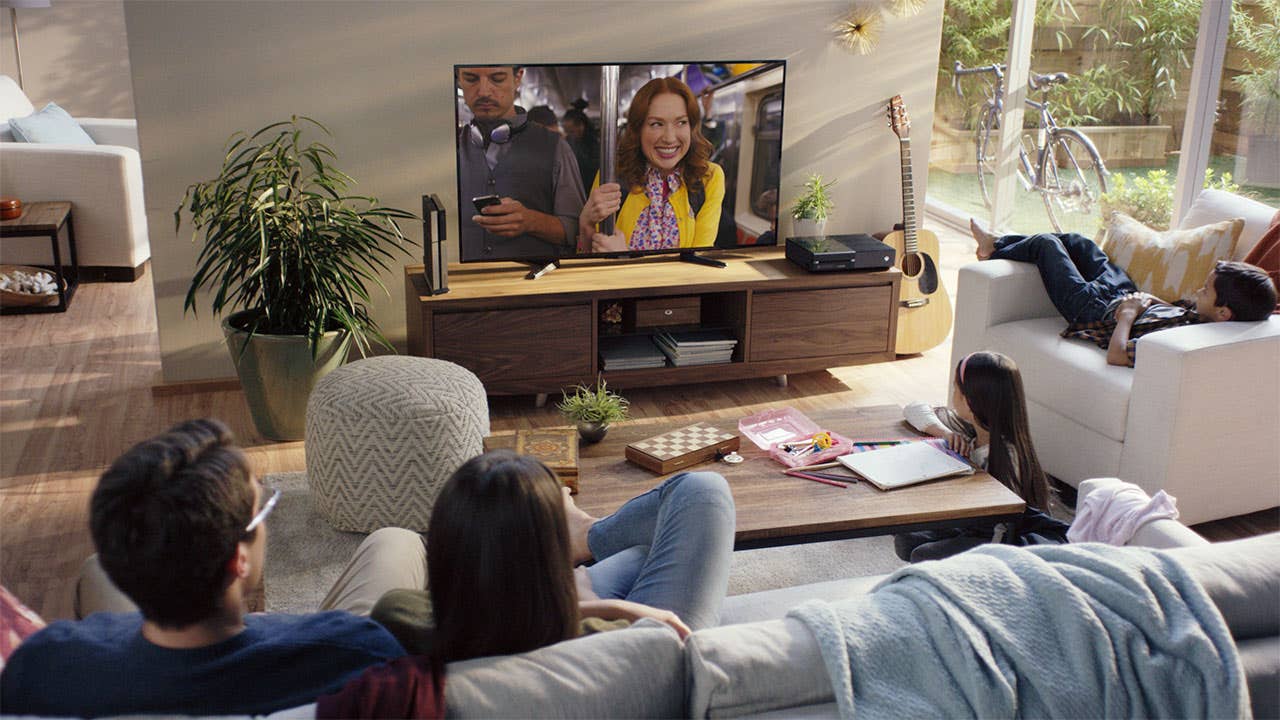Cable TV vs. streaming: Breaking down the costs

The Bankrate promise
At Bankrate we strive to help you make smarter financial decisions. While we adhere to strict , this post may contain references to products from our partners. Here's an explanation for .
Picking the right streaming service or cable provider is just as important as deciding what to watch in this new golden age of television.
Amazon, Hulu and, of course, Netflix collectively reach about 100 million subscribers with their seemingly unending amount of video content, including original TV shows, movies and documentaries. Traditional small-screen networks offer even more viewing options. And some longtime players — including HBO, Starz and Showtime — are capturing people’s imaginations via satellite, cable and Wi-Fi.
What does that mean for you? Options.
| Provider | Cost per month | Emmy nominations (2013–2017) |
|---|---|---|
| Source: Cost information collected from each provider July 2018. Emmy nominations calculated from annual reports by the Hollywood Reporter. | ||
| HBO Now | $14.99 | 538 |
| Hulu | $7.99–$11.99+ | 18 |
| Netflix | $7.99–$13.99 | 224 |
| (Amazon) Prime Video | $12.99 | 44 |
| Showtime | $10.99 | 110 |
| Starz Play | $8.99 | 23 |
By the end of 2018, a total of 33 million U.S. adults will have cut the cord on cable, satellite or telco TV service to date — up 32.8 percent from 24.5 million in 2017, according to a projection from the research firm eMarketer.
The lower prices, portability and ease of signing up offered by HBO Now, Amazon Prime Video and other digital content providers are attractive to viewers, says Tony Lenoir, senior research analyst at Kagan, a media research group within S&P Global Market Intelligence.
“There’s no going back if you ask me,” Lenoir says. “All we need to do is look to the younger generation that grew up with (video on demand) and broadband. They all carry a means to consume content in their pockets. I think sitting in your living room to watch television is a foreign concept to them.”
Cord cutters can get thousands of hours of content for less than $50 per month — digital companies see an average revenue per user around $35 to $40, according to Lenoir. In some cases, viewers could save money if they’re willing to watch ads or make their content available on fewer screens. Most streaming services also offer limited free-trials or reduced entry rates — confident that you’ll sign up and get hooked on the latest dramas and comedies.
The ability to watch your shows anywhere you have internet access is another perk the streaming services provide. Some companies, like Netflix, even let users download content so they can keep watching on the subway or an airplane. Back at the house, Google Chromecast, Apple TV, Roku and Amazon Fire TV Stick let you take your content from the laptop or phone to the big screen.
On the con side, choosing a streaming-only service often means forgoing live television, which could mean waiting for your favorite shows and missing out on the social media conversation of the night (or season) the program airs. And don’t even think about tuning into the playoffs or the tail-end of a close game with these services alone.
| Provider | Cost per month | Channels |
|---|---|---|
| Source: Information collected from each provider July 2018. | ||
| DirectTV NOW | $35–$70+ | 60+ |
| Hulu (includes streaming library) | $39.99 | 50+ |
| Philo | $16–$20 | 40-49 |
| Sling Television | $25–$40+ | 30-50+ |
| YouTube TV | $40+ | 60+ |
Media companies know entertainment lovers, news junkies and sports fanatics want live TV without signing up for cable or satellite services. And more than a handful of options have popped up during the past few years to meet the demand.
Providers offering live TV come with many of the same perks as above — enticing entry offers, the ability to walk away from a television, no long-term commitments, etc. And some providers like, Philo and Sling, offer the ability to record/save shows in addition to healthy on-demand libraries.
Hulu and YouTube are blurring the lines between TV providers and producers by offering a lineup of original content, including “Sideswiped” and “The Handmaid’s Tale,” on top of the current programs from CNN, ESPN, Disney and other established networks.
Traditional TV providers
Despite all the talk of cord cutting, cable and satellite companies have seen their average revenue per user increase 53 percent since 2007 to $100.96 in 2017, according to data from Kagan.
Lenoir says two big things are driving up the average cable bill:
- Programming expenses are rising, so distributors are passing on those costs.
- The people with cords still intact are likely able to spend more.
Pricing for DISH Network, DirecTV, Spectrum from Charter Communications Inc., Xfinity from Comcast and other television providers can get real complicated, real fast. That’s because unlike with streaming-only services, cable and satellite providers can offer bundles that loop in internet, phone and cable/satellite services. Some bundles and content packages come with access to on-demand libraries that can be streamed via TV set or laptop. Others offer attractive trial periods for premium channels including HBO, Starz, Showtime and Cinemax.
On the con side, the big players often want consumers to agree to carry their service for an extended period, might add equipment and instillation costs and jack up prices after the introductory offer. Plus, if you don’t need phone or internet service, bundling might not make sense.
Think it through
Do some homework first. Make a list of deal-breaker shows or channels and check to see if they’re available on streaming services. You should also call your cable/satellite company to ask about your options if you want to downgrade.
If you’re totally new to streaming, it makes sense to test the services before you make any big changes. Canceling cable can be complicated and, if you’re under contract for a one- or two-year commitment, expensive. However, it’s very easy to sign up for most streaming services and cancel them without financial penalty if you discover their content to be totally out of line with your tastes.
It also pays to take a look at the back of your TV. If you find a USB drive there, then Google Chromecast and Amazon Fire TV offer quick, low-cost options for getting streamed content onto a screen bigger than your phone or tablet. You should also consider higher-end devices like Apple TV or Roku, both of which make watching streamed content on your TV easier.
Learn more:
Related Articles




This handy chart of airline fees shows how costs compare on the major US carriers